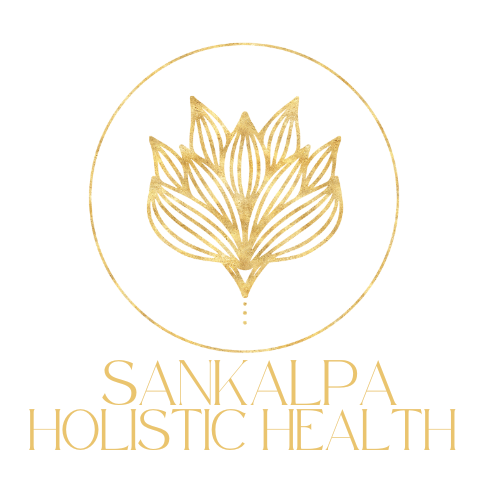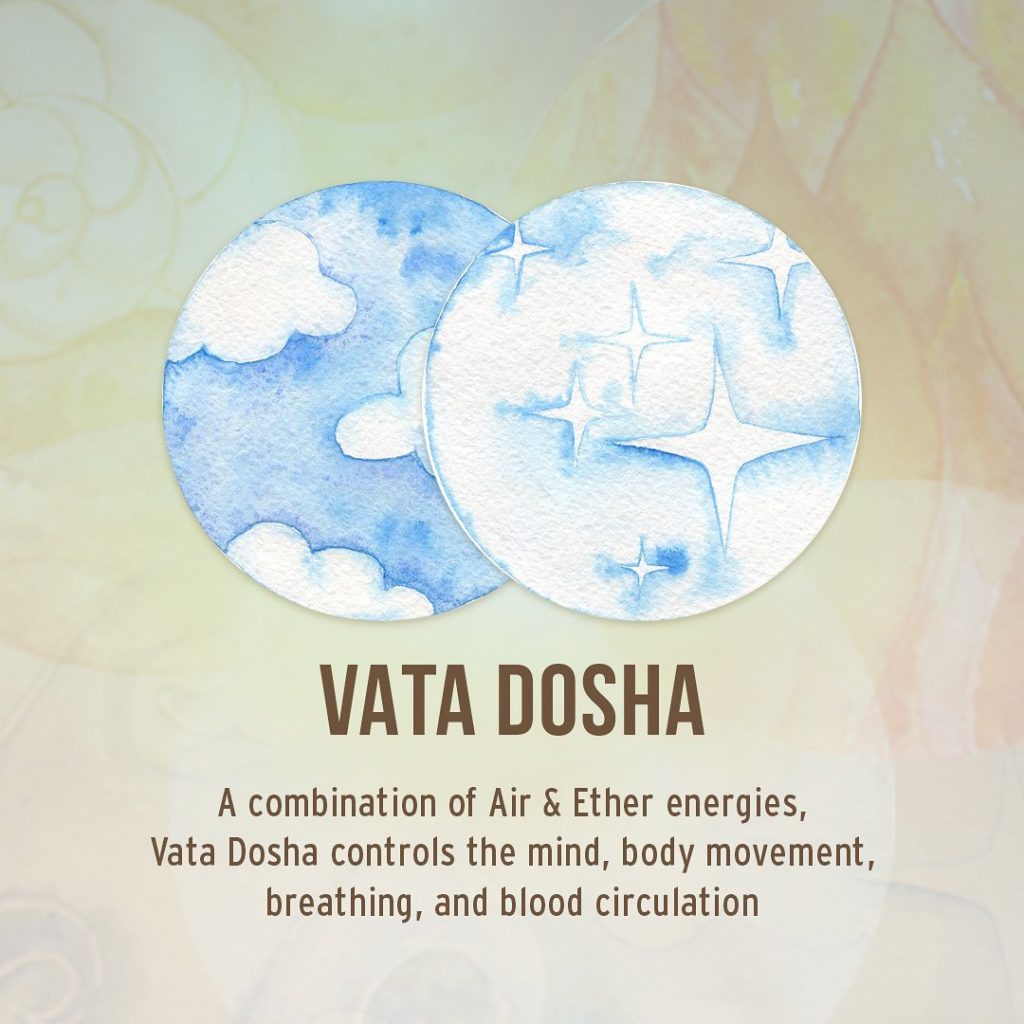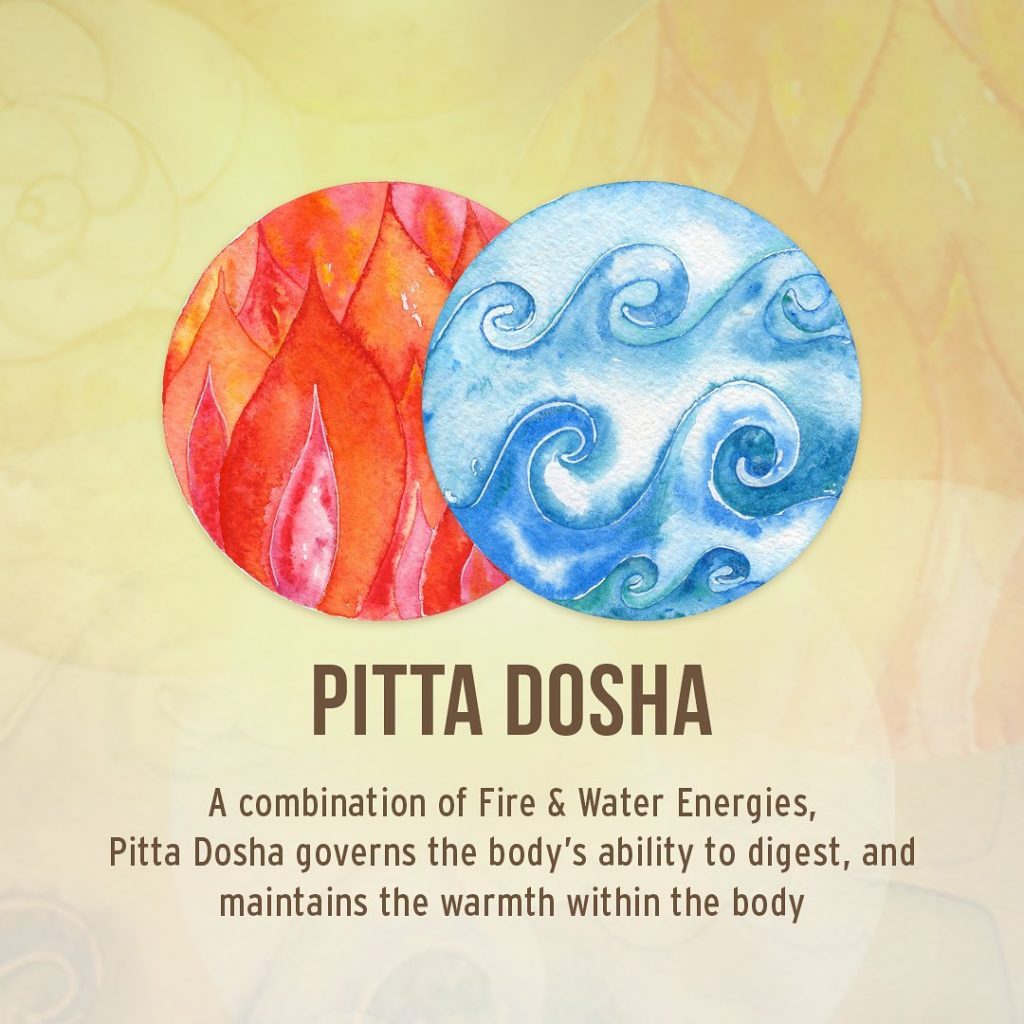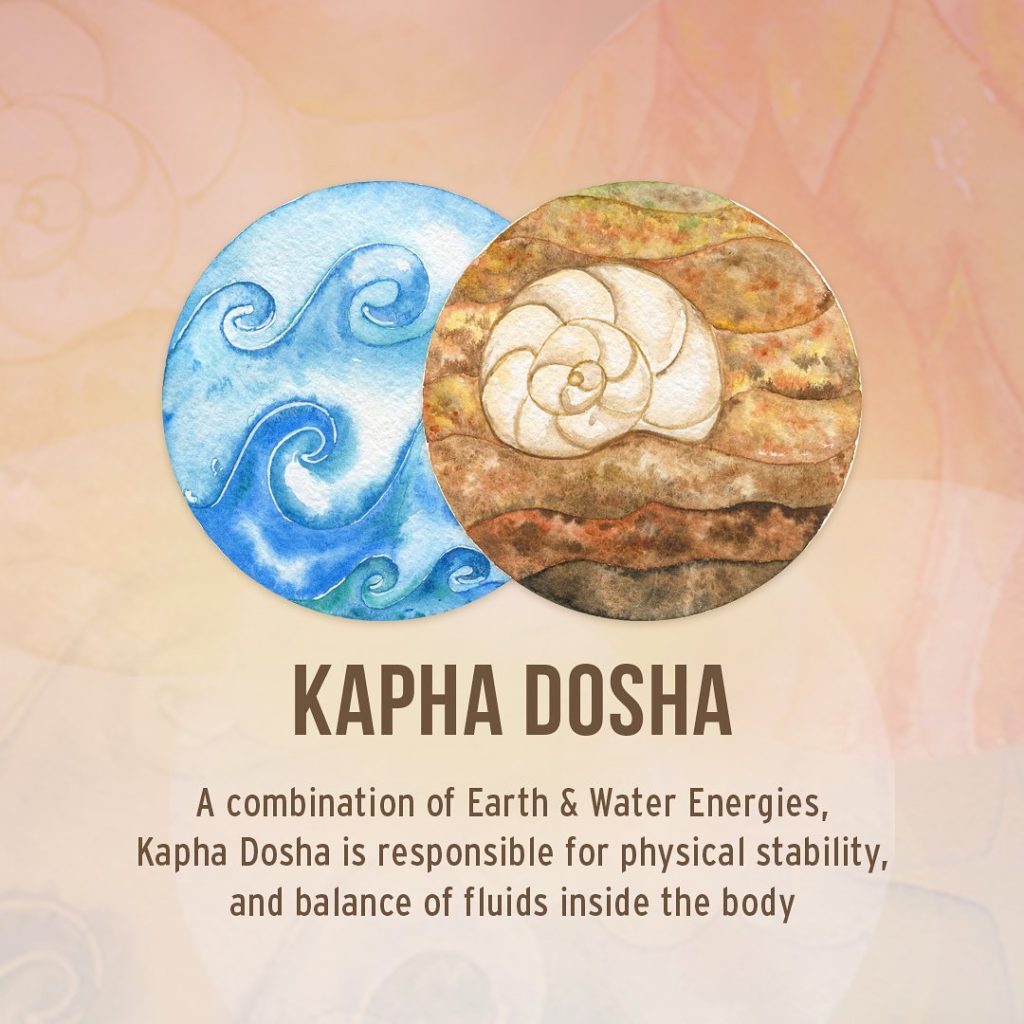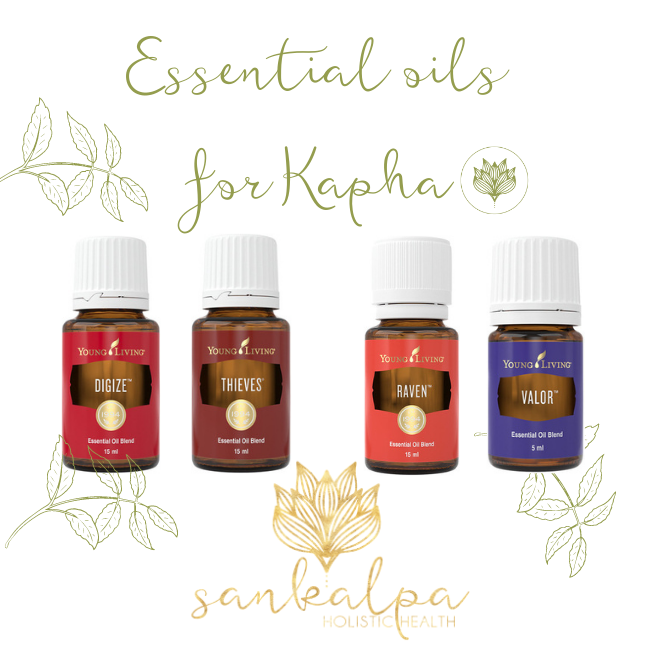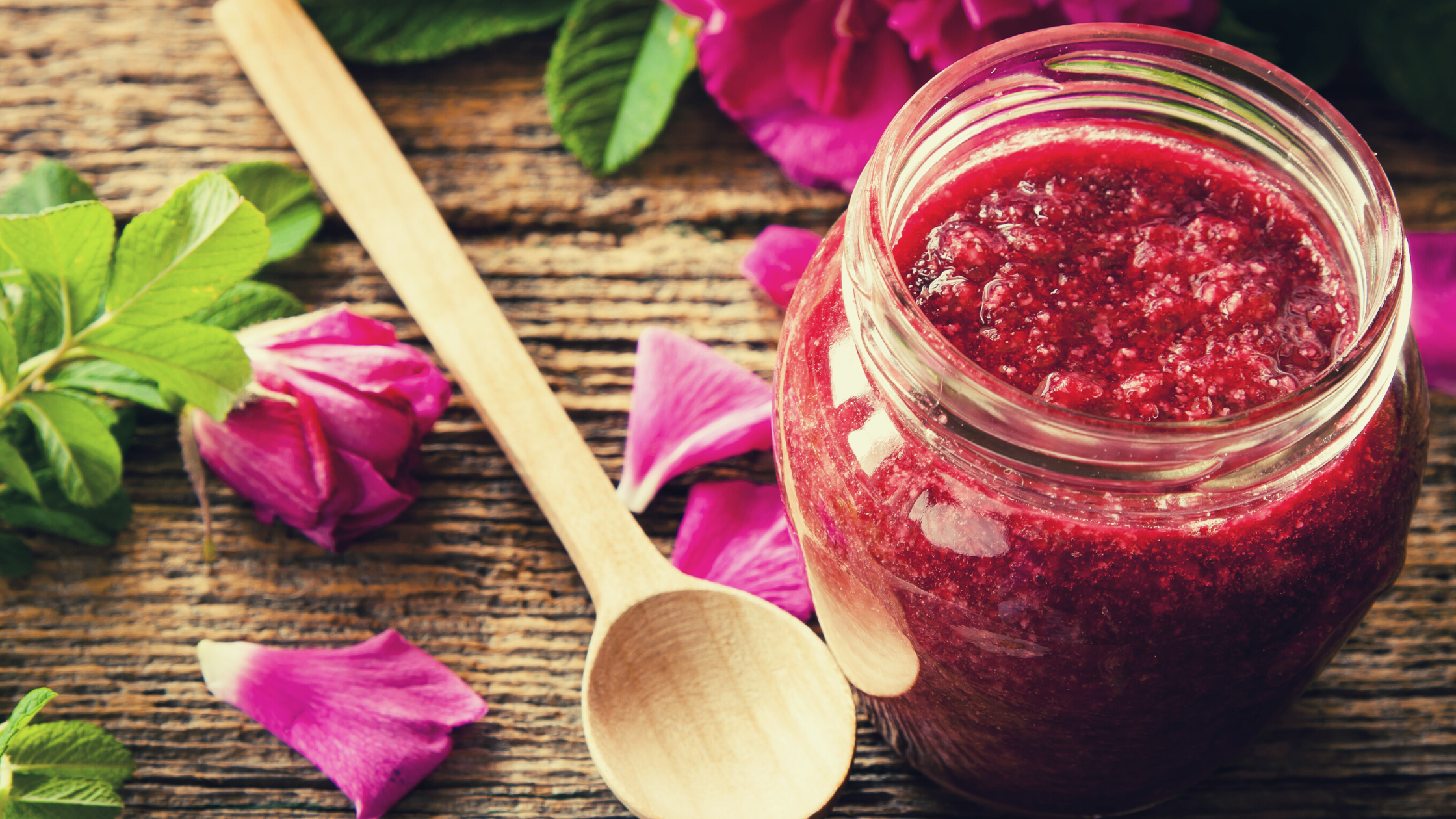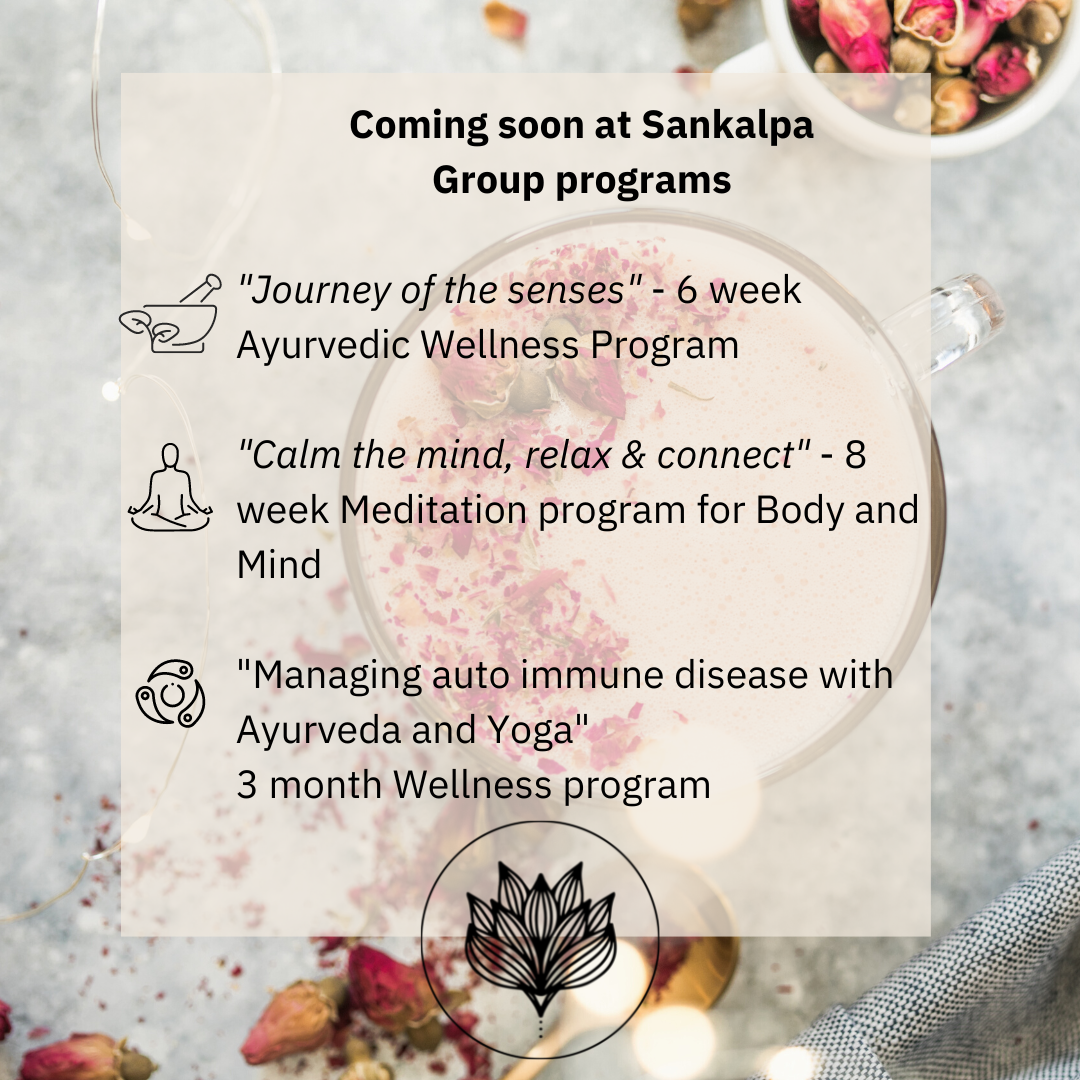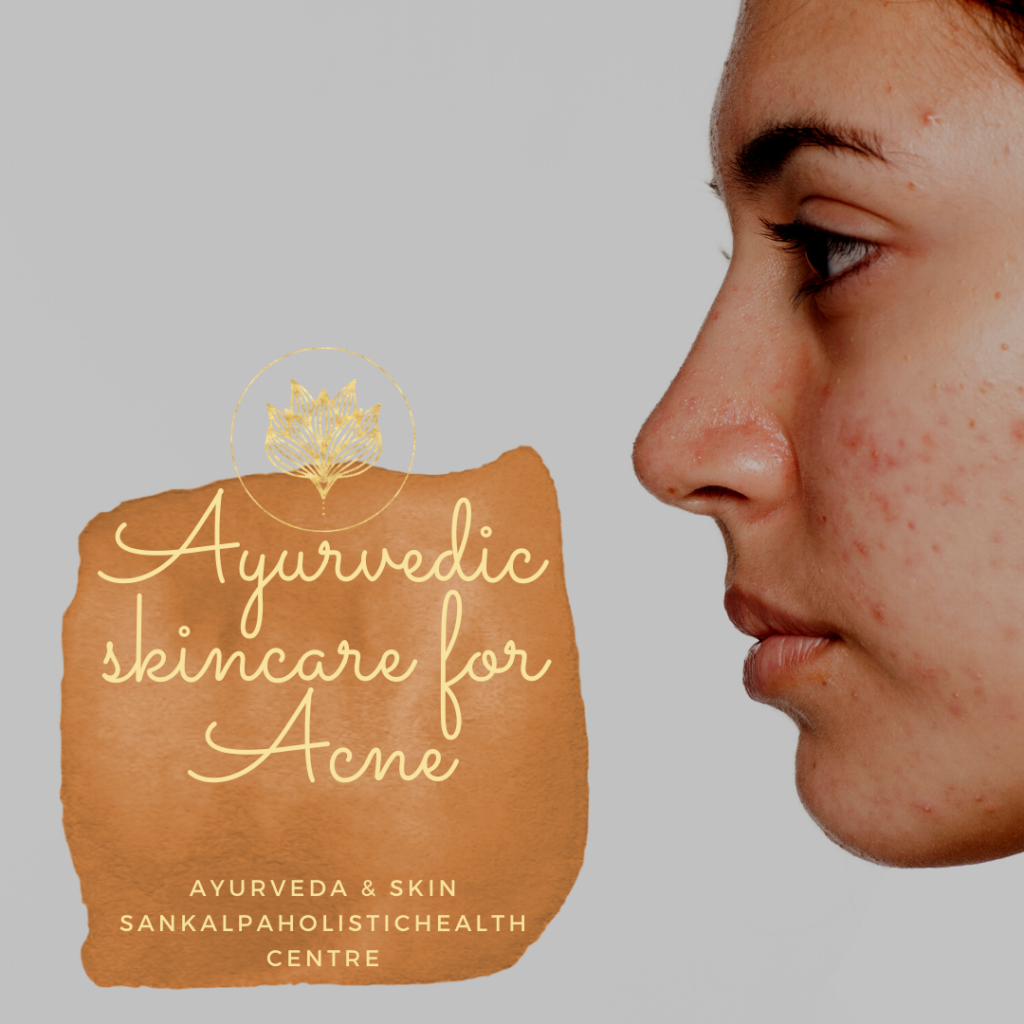
A very common skin condition is Acne. According to Mayo Clinic, Acne is a skin condition that occurs when your hair follicles become plugged with oil and dead skin cells. It causes whiteheads, blackheads or pimples. Acne is most common among teenagers, though it affects people of all ages.
Effective acne treatments are available, but acne can be persistent. The pimples and bumps heal slowly, and when one begins to go away, others seem to crop up. Depending on its severity, acne can cause emotional distress and scar the skin.
According to Ayurveda, acne can be due vitiation of vata, pitta or kapha dosha. For those that are familiar with Ayurveda as science, the doshas is nothing new. But I can imagine that if you are new it does require some more explanation. I would like to therefore give some background.
Ayurveda – The 5 Elements and the 3 Doshas
Ayurveda is the traditional medicine of India and the oldest system of healthcare in the world. A system of both preventative and curative medicine, it has been practiced for at least 5,000 years and perhaps as long as 10,000 years. Fundamental to Ayurveda is the understanding that each person is unique and as a result, each person’s path toward optimal health is unique. As one of my teachers, Dr. Marc Halpern says: “Nothing is right for everyone, everything is right for someone. Ayurveda is a path of what is right for you.”
Ayurveda helps us to know what types of foods, sounds, smells, and other stimuli will create a state of balance and harmony in our unique body and mind. When the body and mind are in harmony, normal physiology is restored and healing takes place.
In Ayurveda, ‘Prakruti’ or ‘The First Creation’ refers to a blend of the 5 Universal Energies or Elements that makes a person completely unique. Discovering one’s own ‘Prakruti’ is the beginning of understanding one’s own uniqueness. These 5 Universal Energies, Earth, Water, Fire, Air and Ether, constitute the human body.
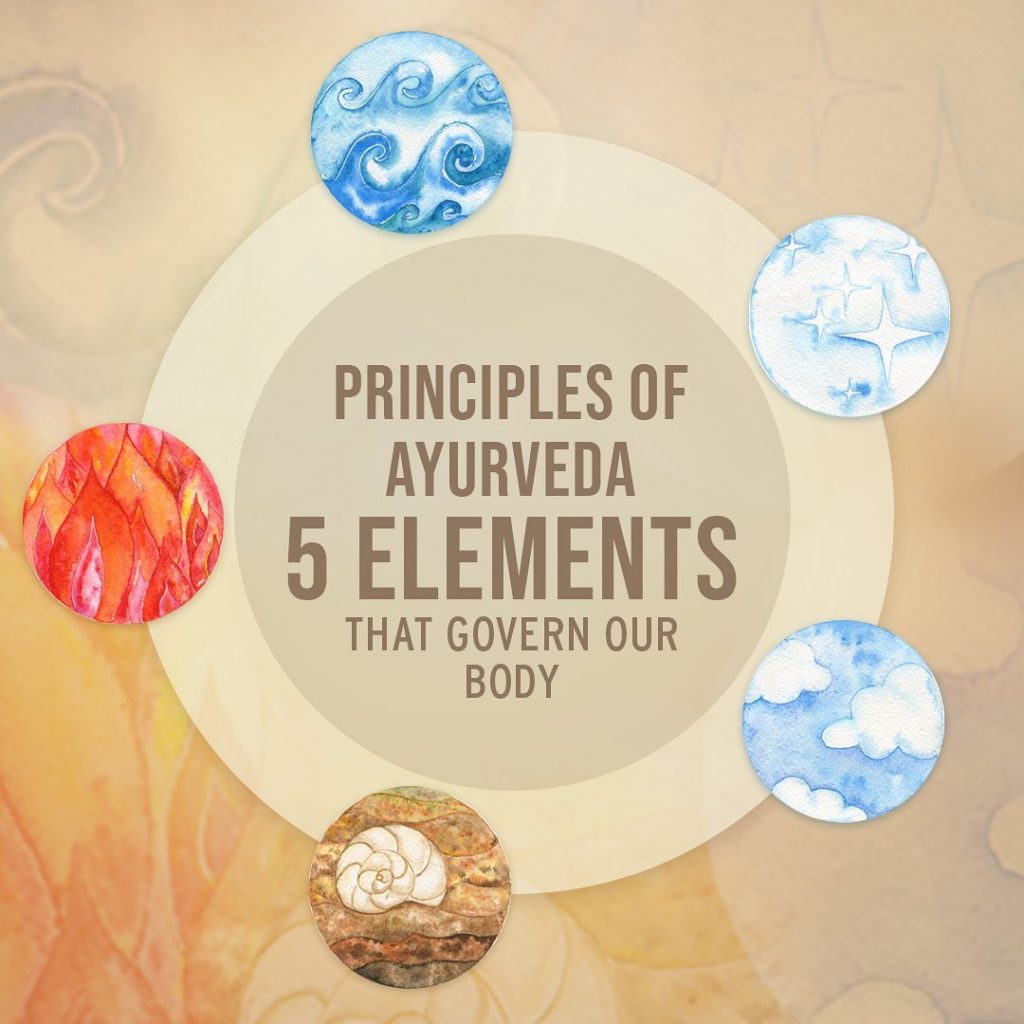
- Earth (Prithvi) represents the solid state of matter
- Water (Jala) represents the fluid state of matter
- Fire (Tejas) represents the energy to transform the matter from one state to another.
- Air (Vayu) represents the gaseous state of matter
- Ether (Akasa) represents space in which matter is contained
A balance between them ensures perfect health, harmony between all the body functions, and helps you achieve your true inner and outer beauty.
So when we look our skin, we all have different skin types. From normal to dry, oily, sensitive, or even acne-prone skin. The reason this varies from person to person is due to the 3 doshas – Vata, Pitta and Kapha. They are life giving forces inside our body. These 3 doshas are a combination of the 5 Universal Energies. Each one of us has a unique manifestation of these 3 Doshas inside our body. Understanding the characteristics of these Doshas, and keeping them in harmony ensures a healthy, happy life. We can also find these 3 Doshas represented in our skin.
- Vata dosha is a combination of Air and Ether energies. This dosha controls the mind, body movement, breathing, and blood circulation.
- Pitta dosha is a combination of Fire and Water energies. This dosha governs the body’s ability to digest, and maintain warmth within the body.
- Kapha dosha is a combination of Earth and Water energies. This dosha is responsible for physical stability and balance of fluids inside the body.
Ayurvedic Interpretation of Acne
The acne lesions on the skin reveal the dosha involved.
- Vata type lesions are typically dry, hard and have a blackhead.
- Pitta type lesions are typically inflamed and the skin around is reddened.
- Kapha type lesions are typically swollen, pus-filled cysts and may have whiteheads.
In Ayurveda depending on the dosha involved different treatment is chosen. Overall it is really important to normalize digestion. Special attention must be give to what we eat, how we eat and also that we appropriately combine certain foods. In addition to diet and lifestyle correction it is equally important to appropriately cleanse your face. You can do this wonderfully with face masks (mukha lepa). I would love to give you a few simple face masks that you can make yourself with Ayurvedic herbs. You apply the mask to your face for 20 to 30 minutes and wash off with water.
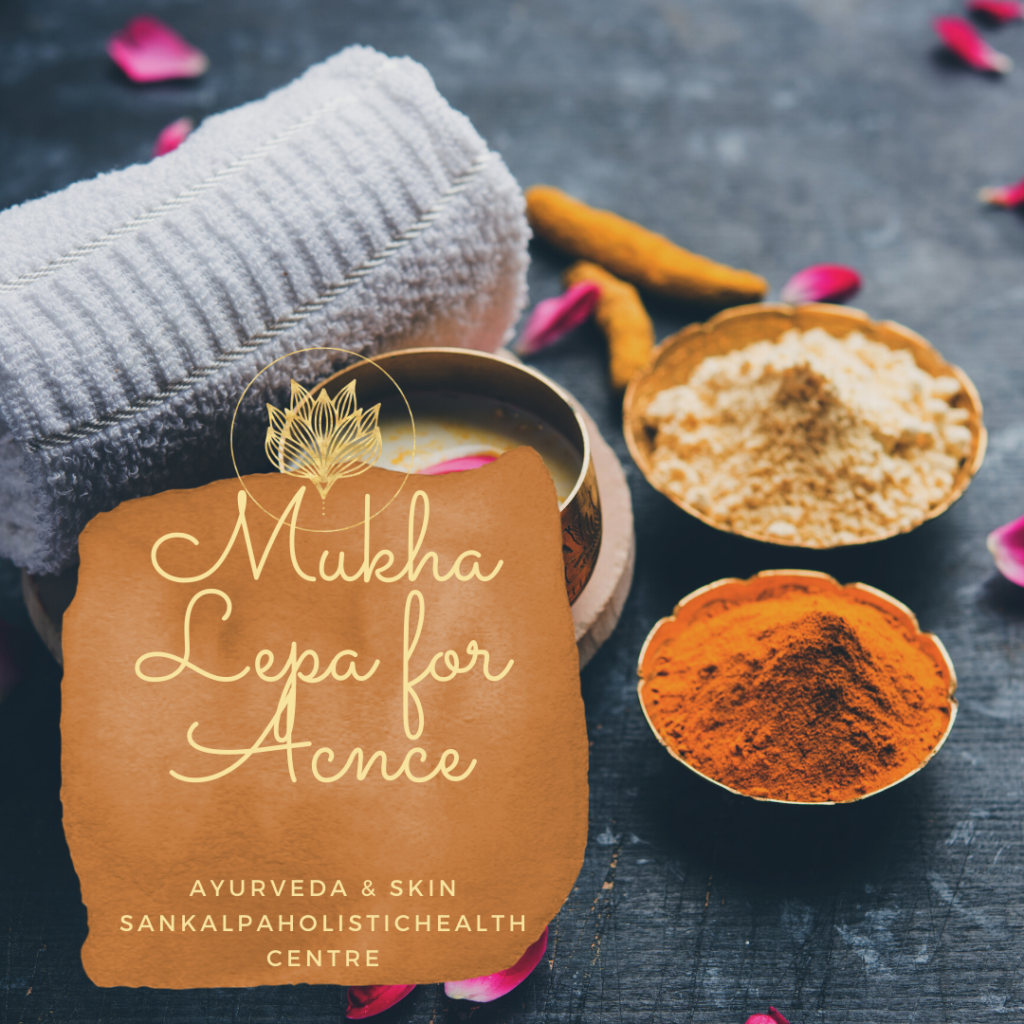
Vata Face Mask
Urad dhal flower, oat flower and shatavari powder, utilising whole milk as wetting agent.
Pitta Face Mask
Chickpea flower, oat flower and manjistha powder mixed with rosewater as wetting agent.
Kapha Face Mask
Combine equal parts mung dal flower, barley powder and neem powder mixed with rose water.
Want to know more about how to take care of your skin or once the lockdown is over ready to experience Ayurvedic skin treatment? Contact us at Sankalpa Holistic Centre.
Love and light Riim
Disclaimer: Note that any recommendation o rtreatment or advice in this in this post is not intended to be a substitute for professional medical advice, diagnosis or treatment. Please always seek the advice of your physician with any questions you may have regarding a medical condition.
